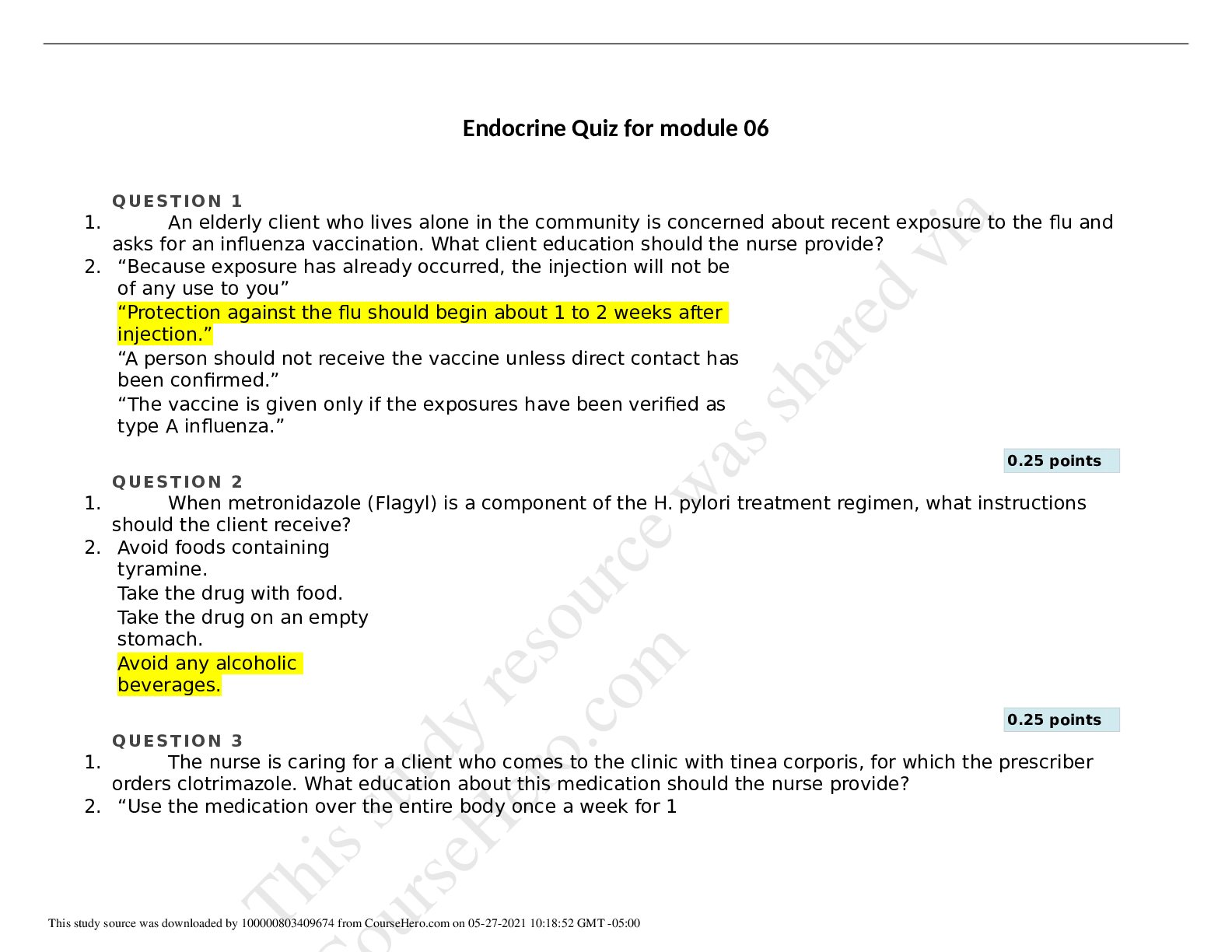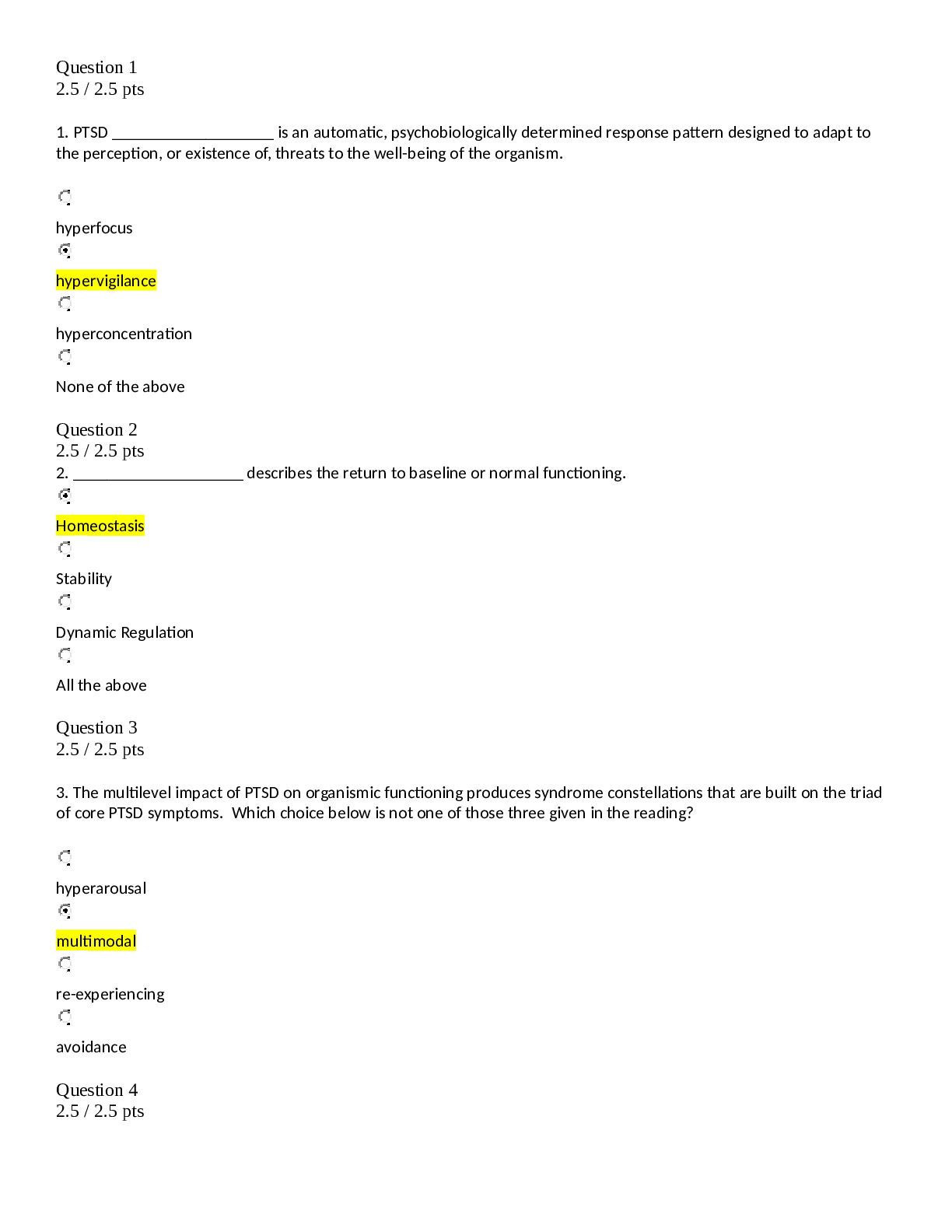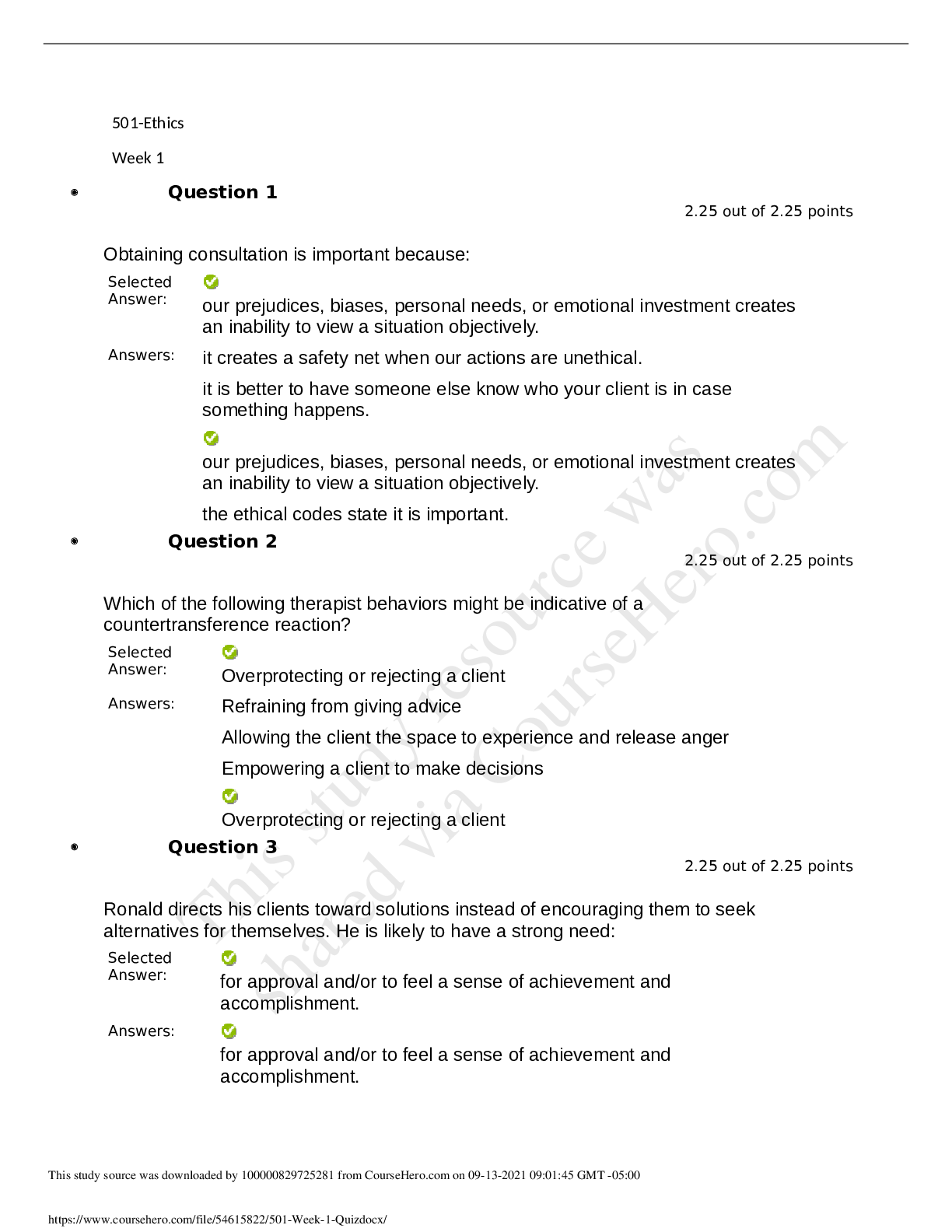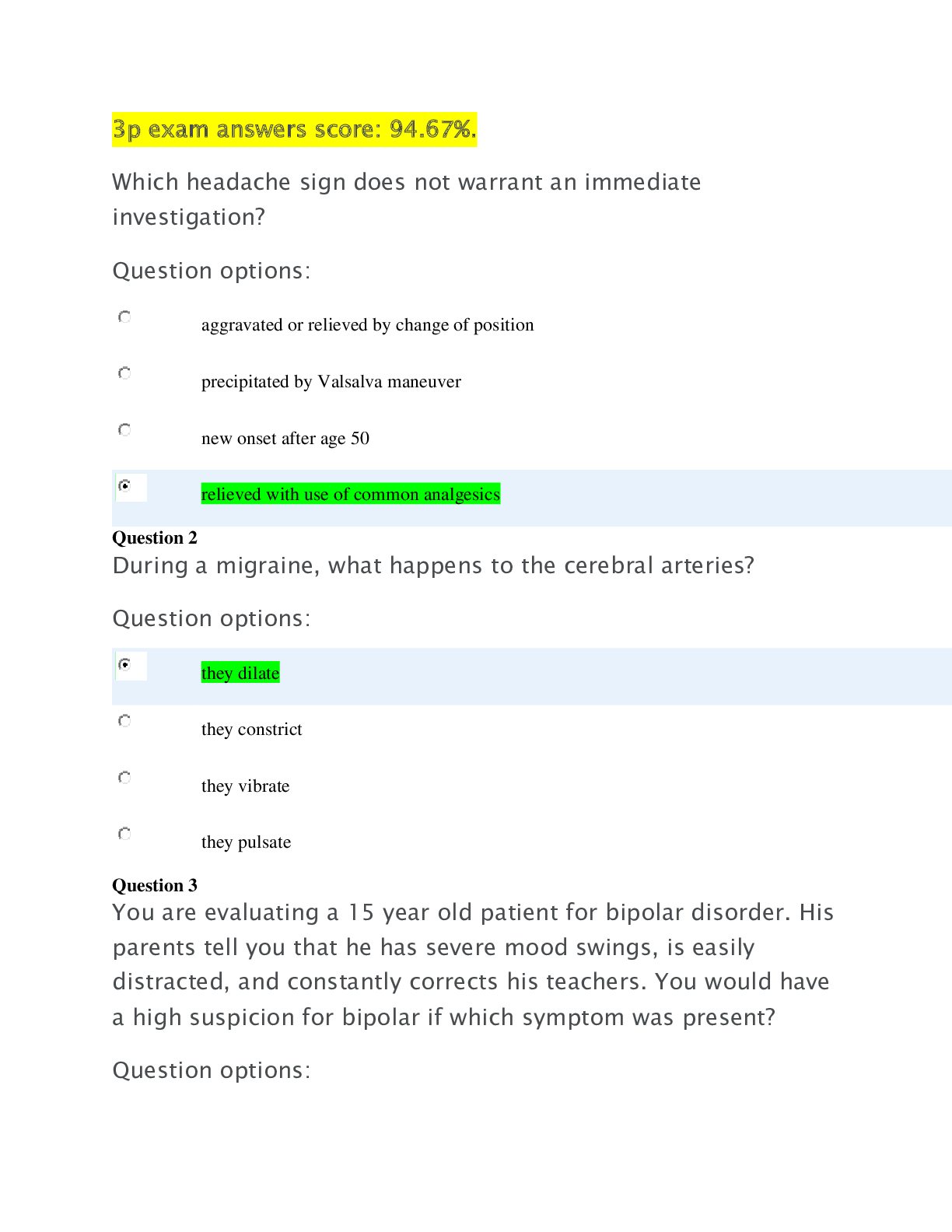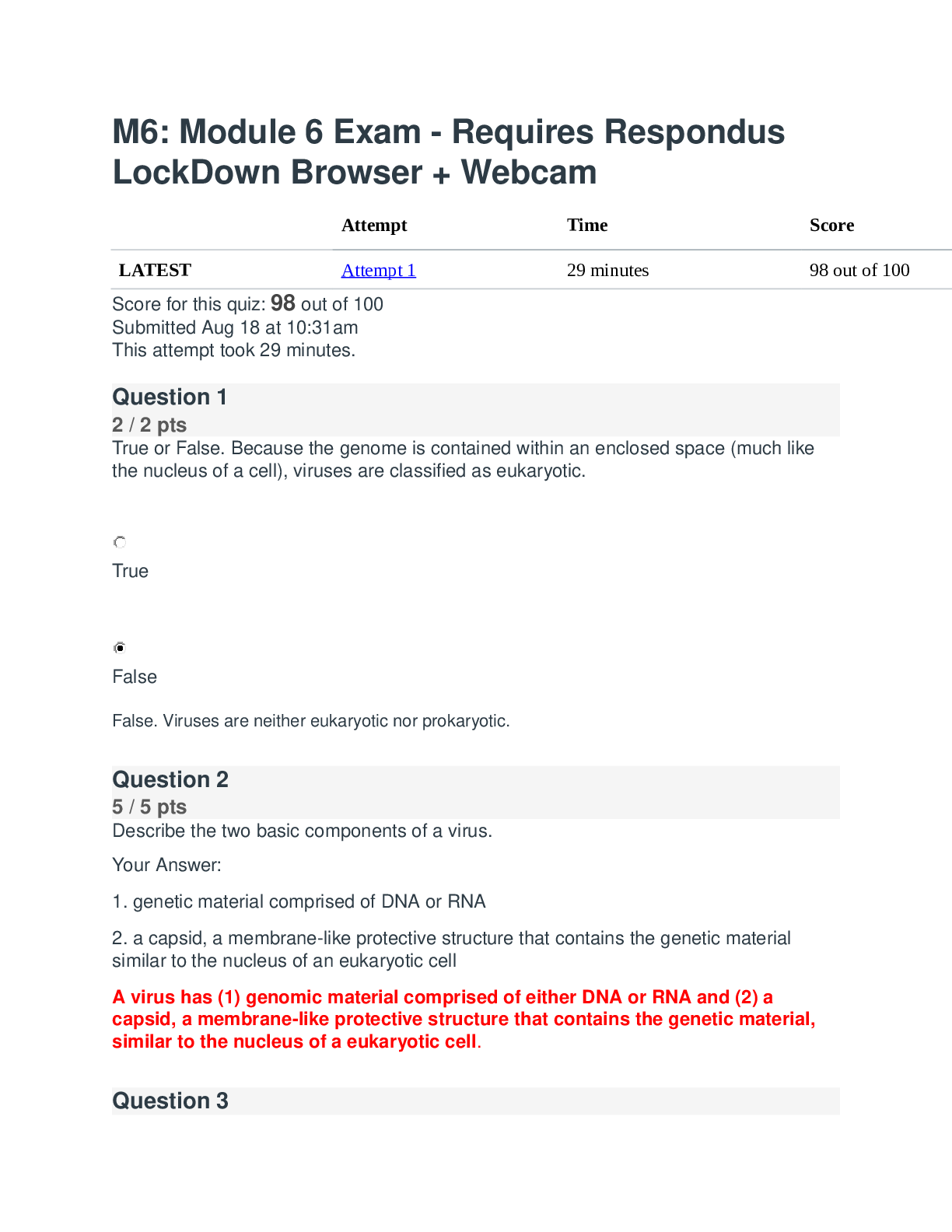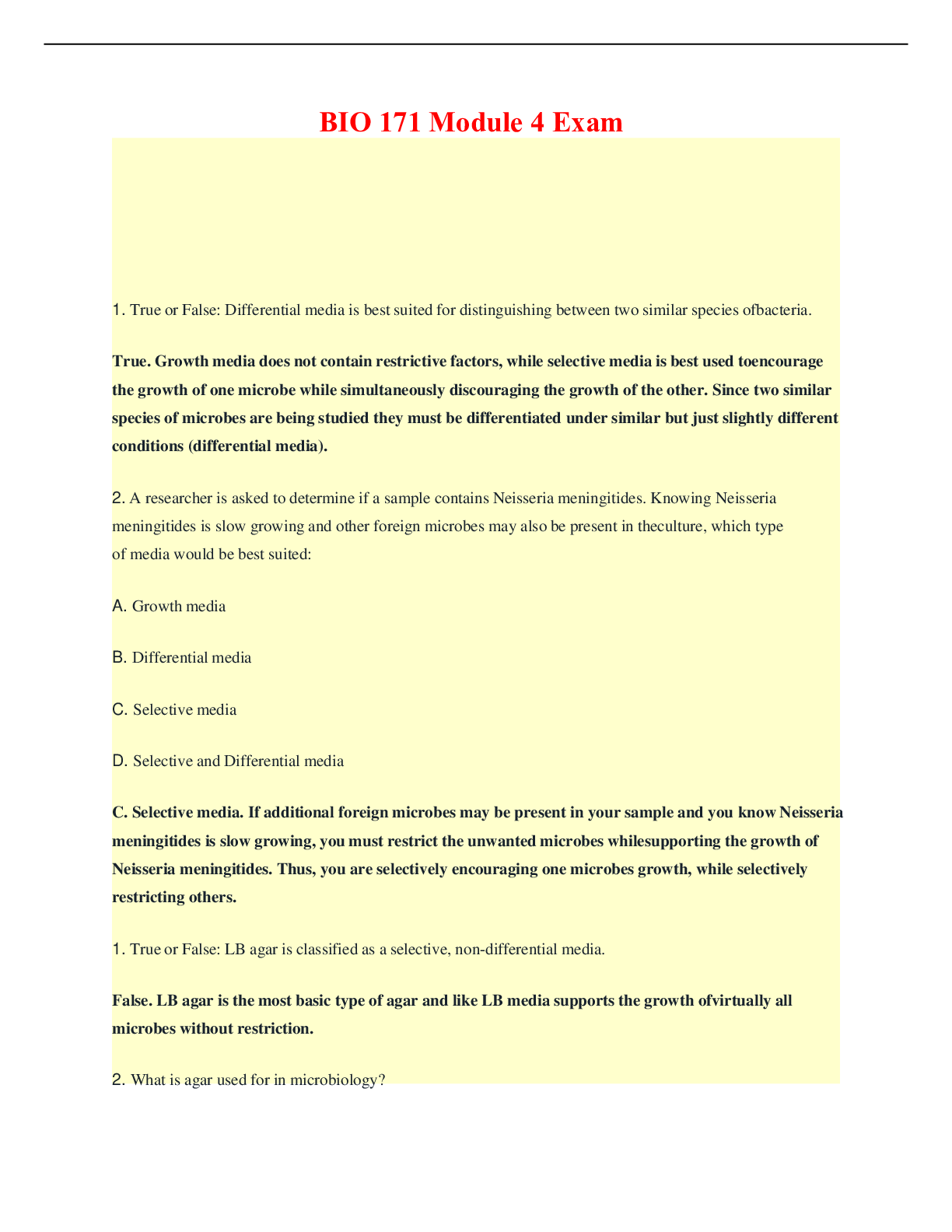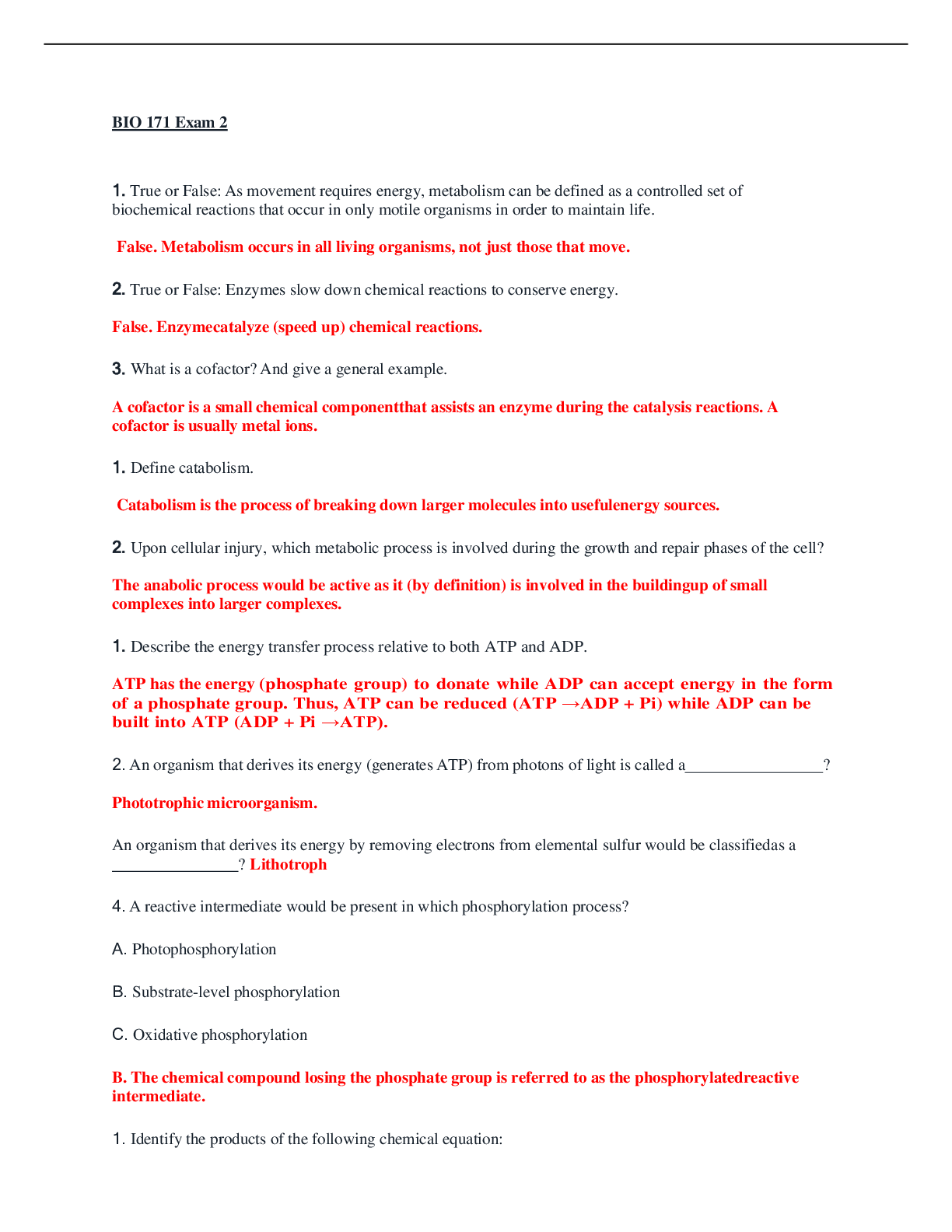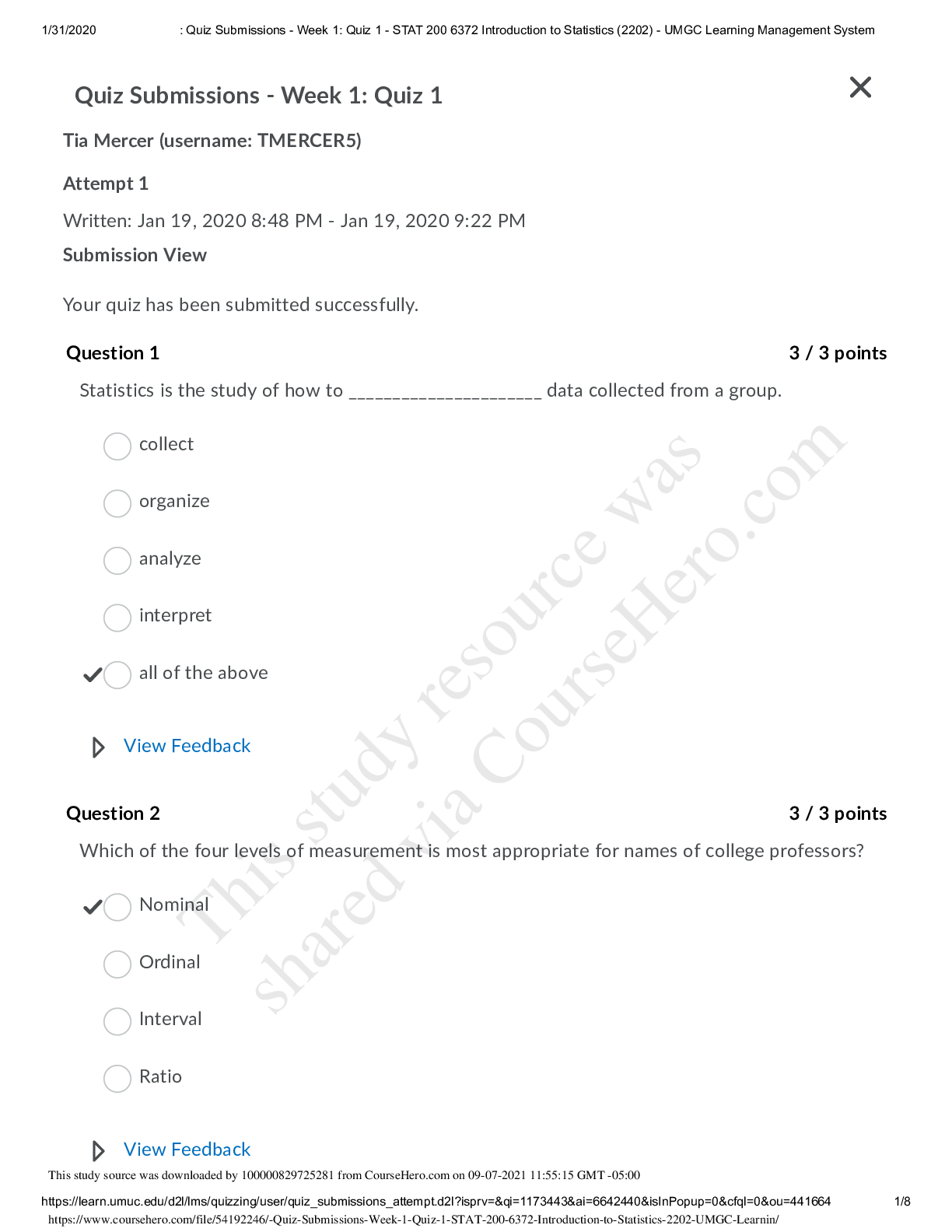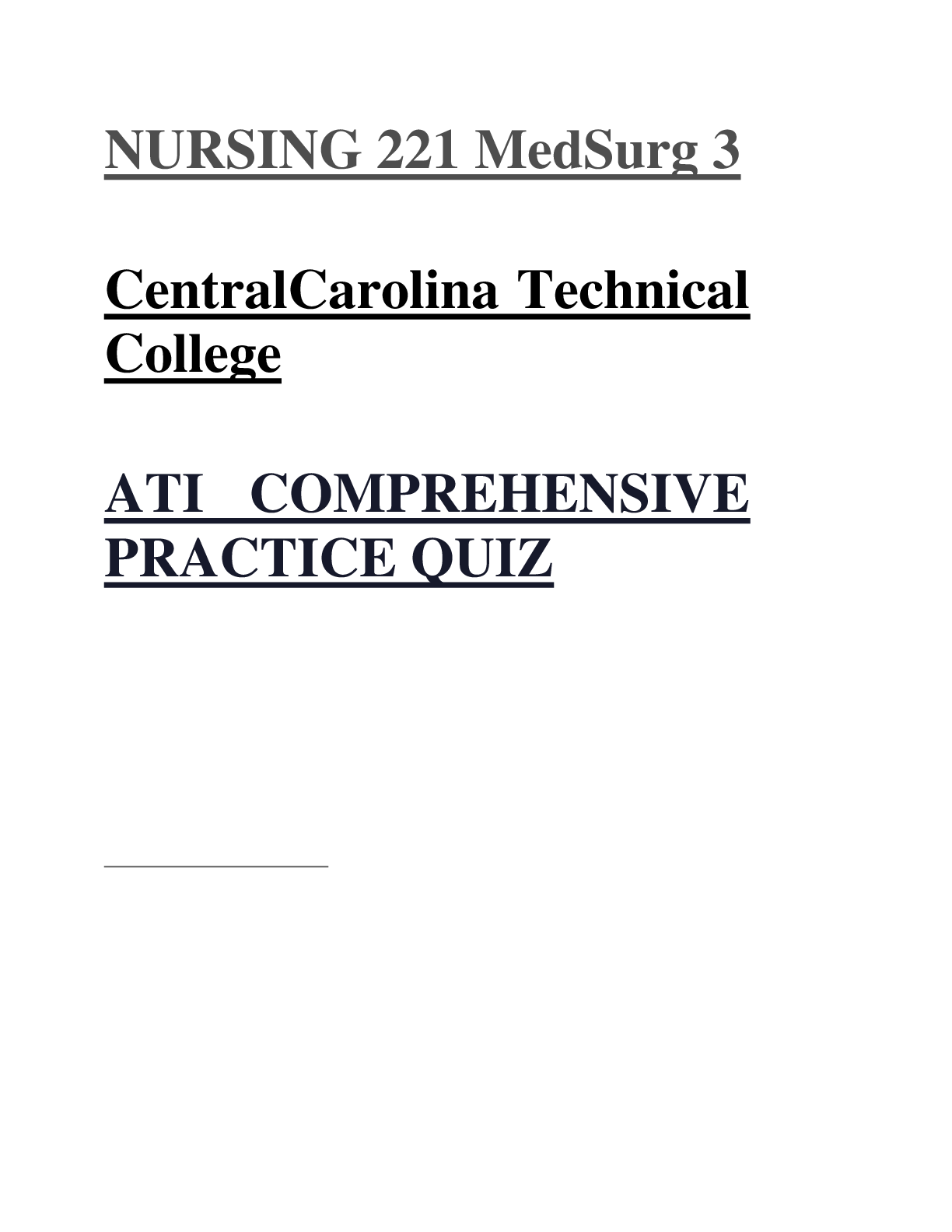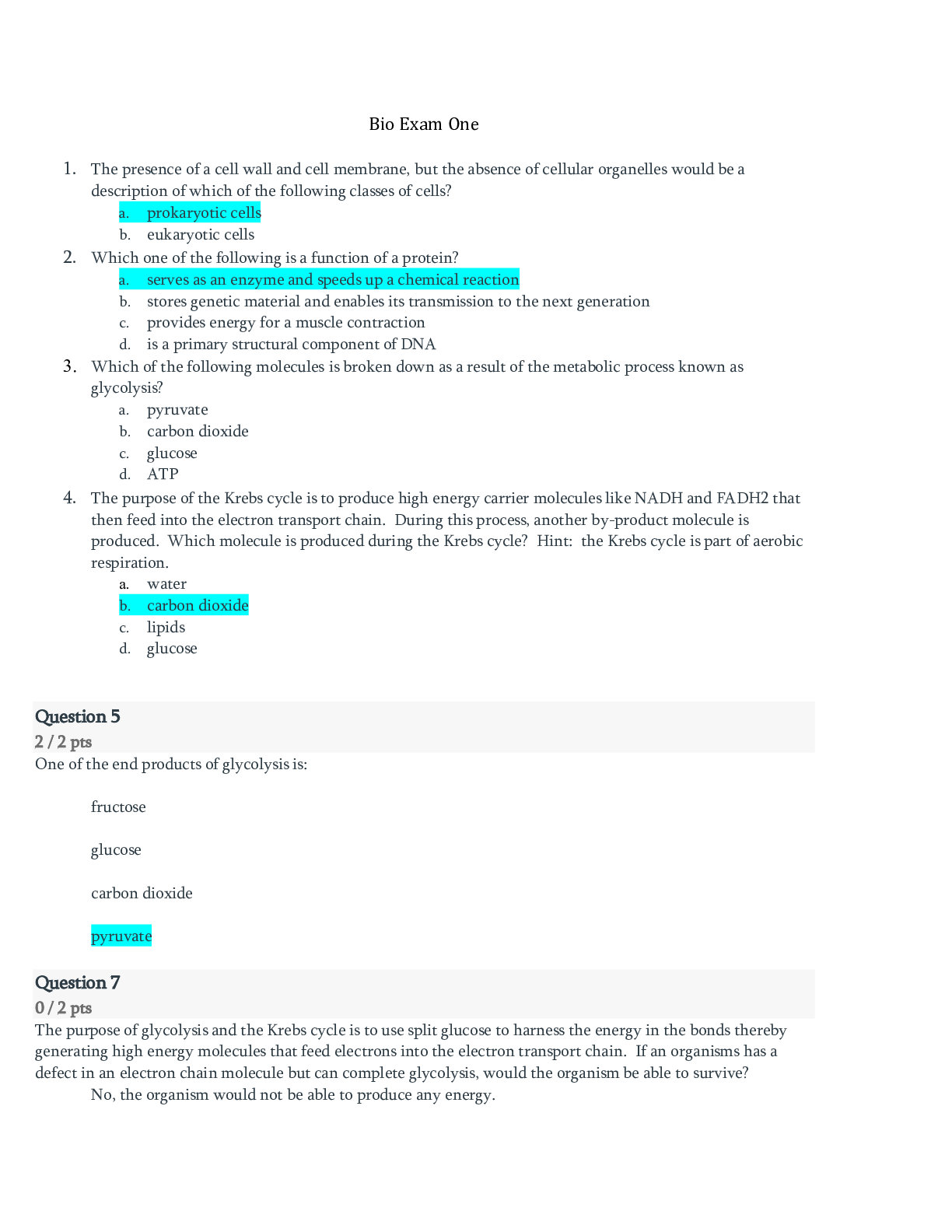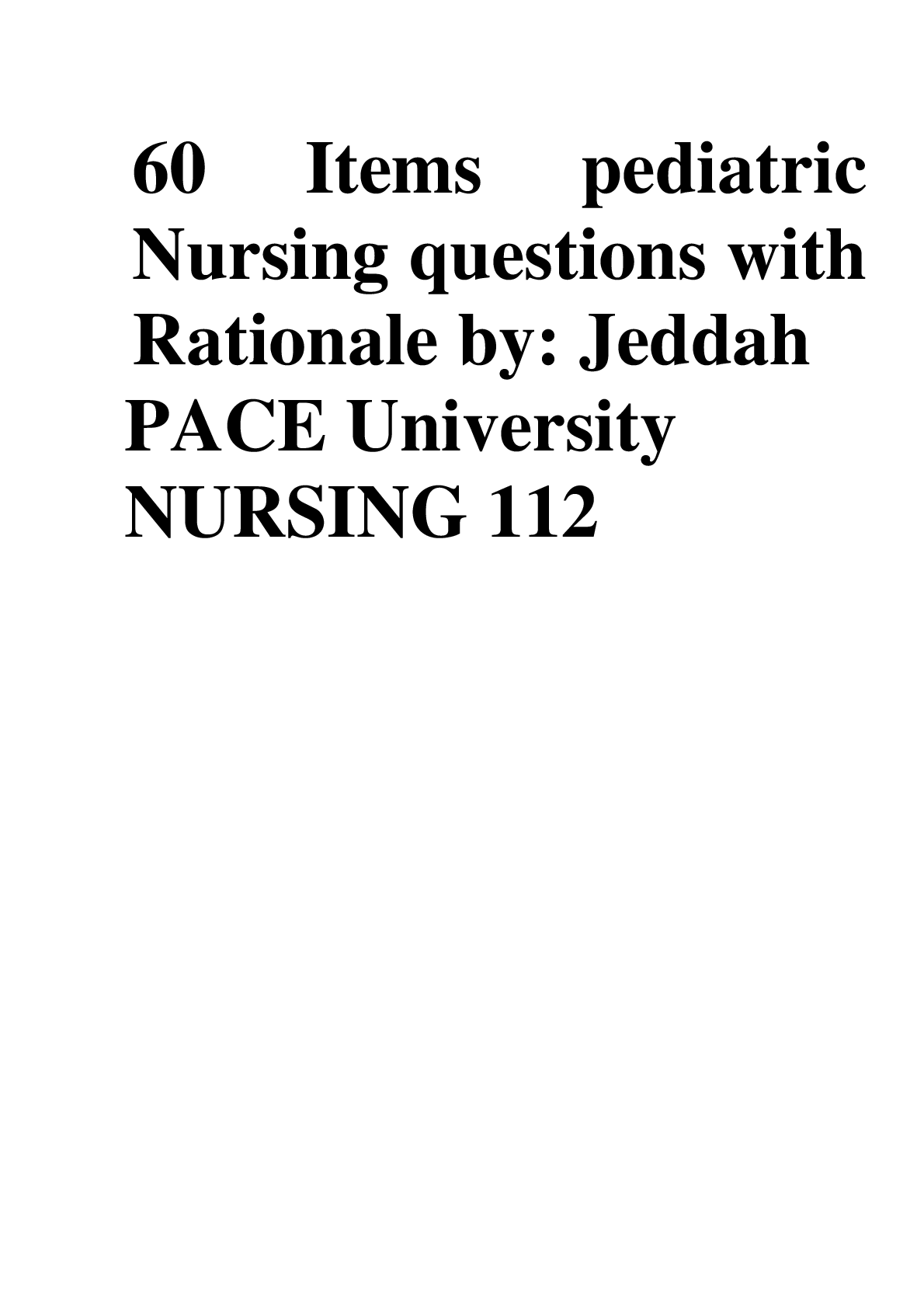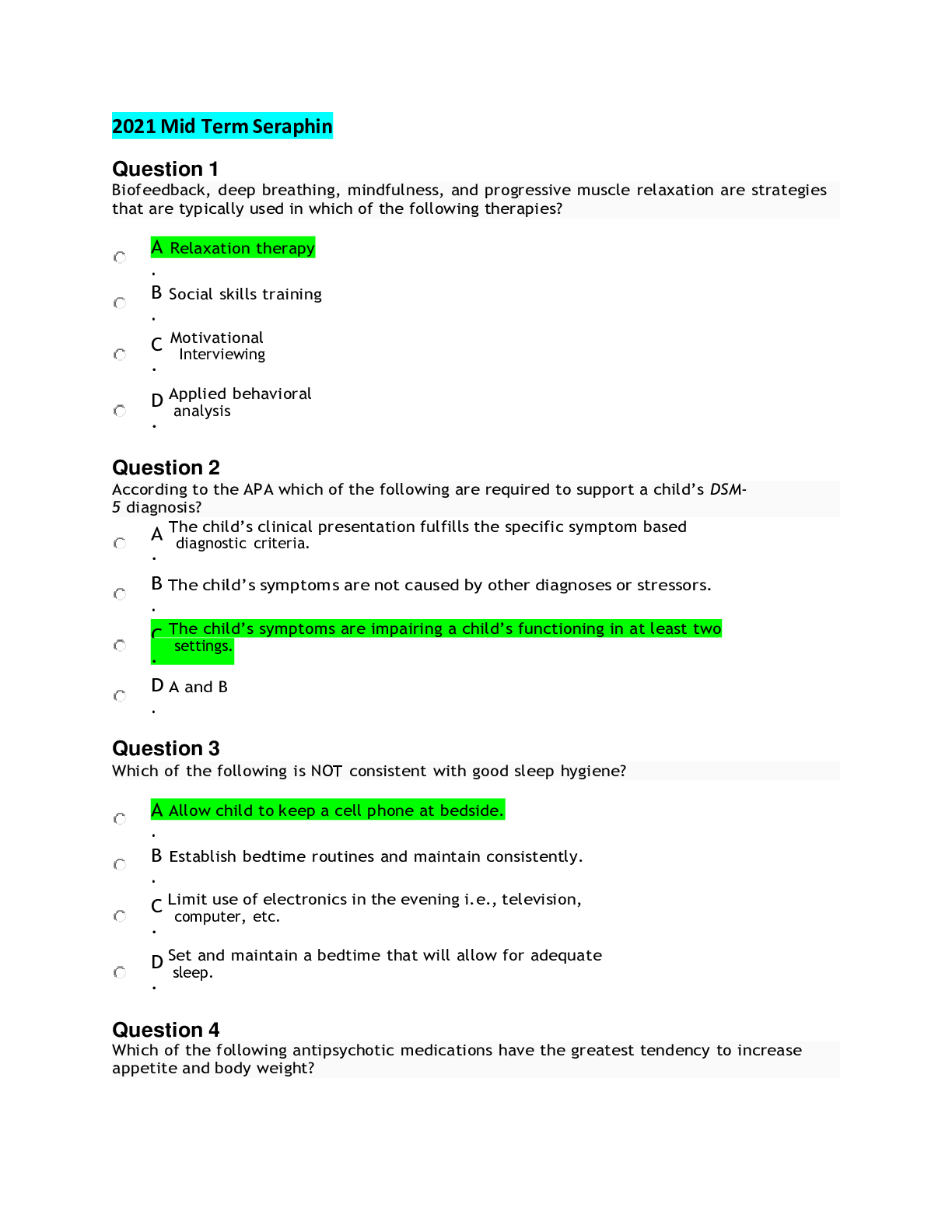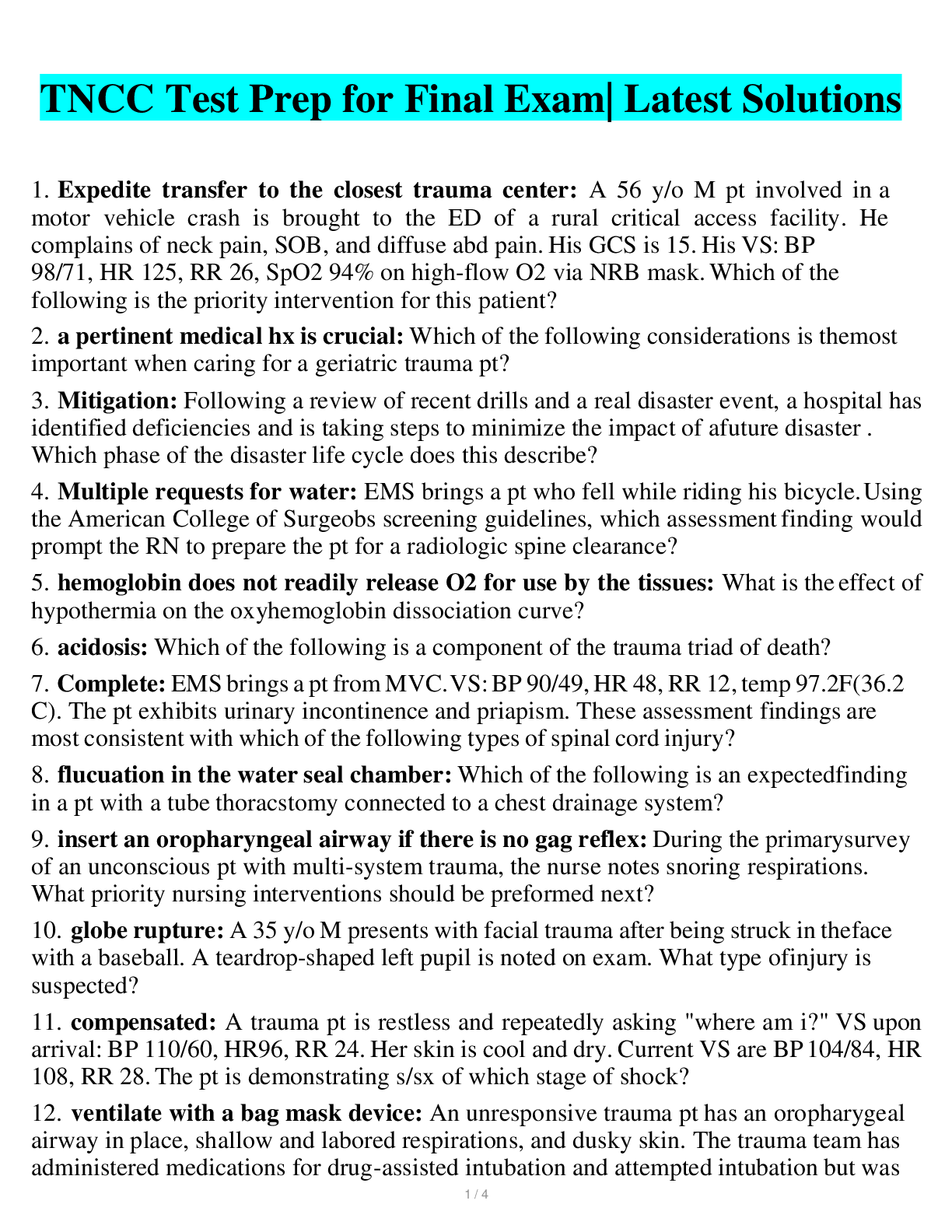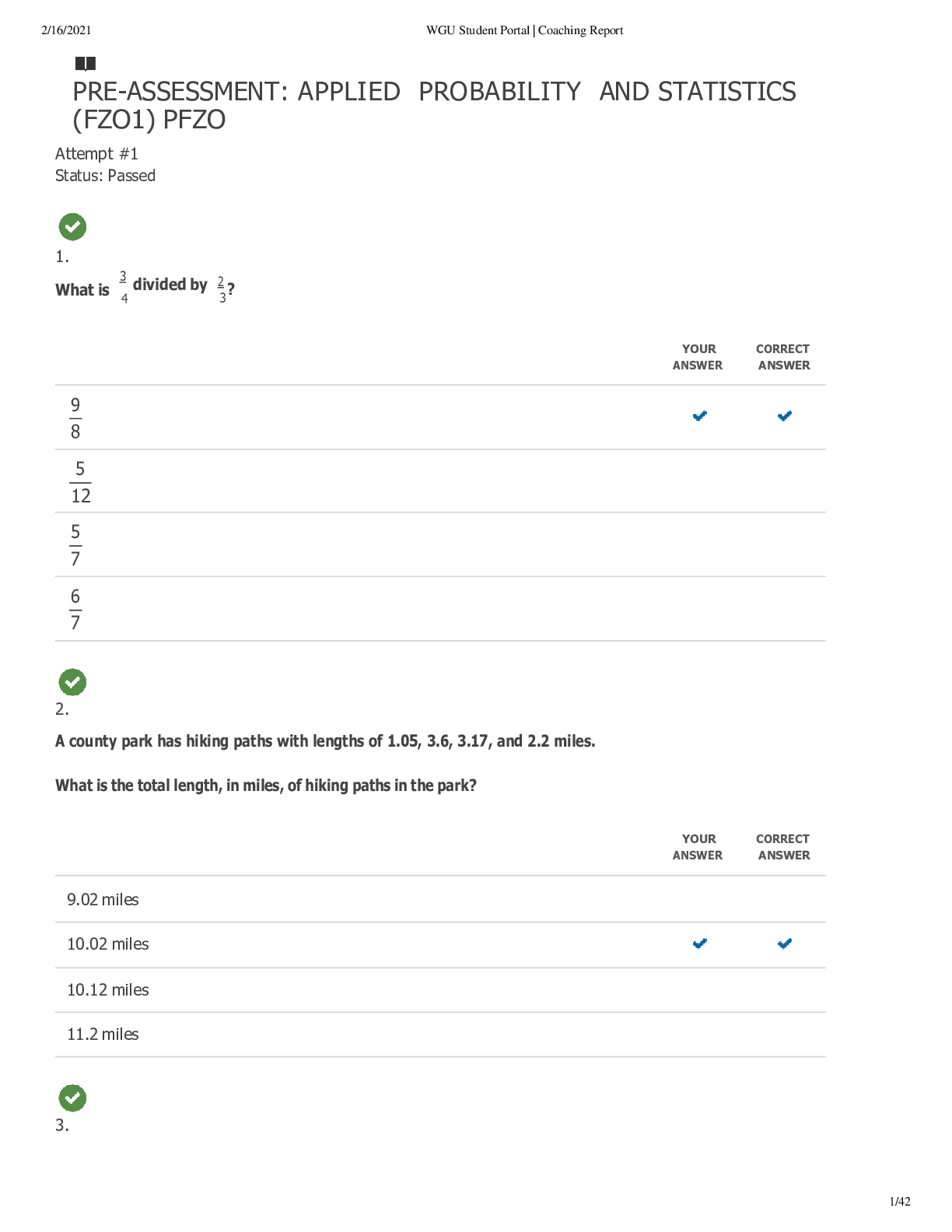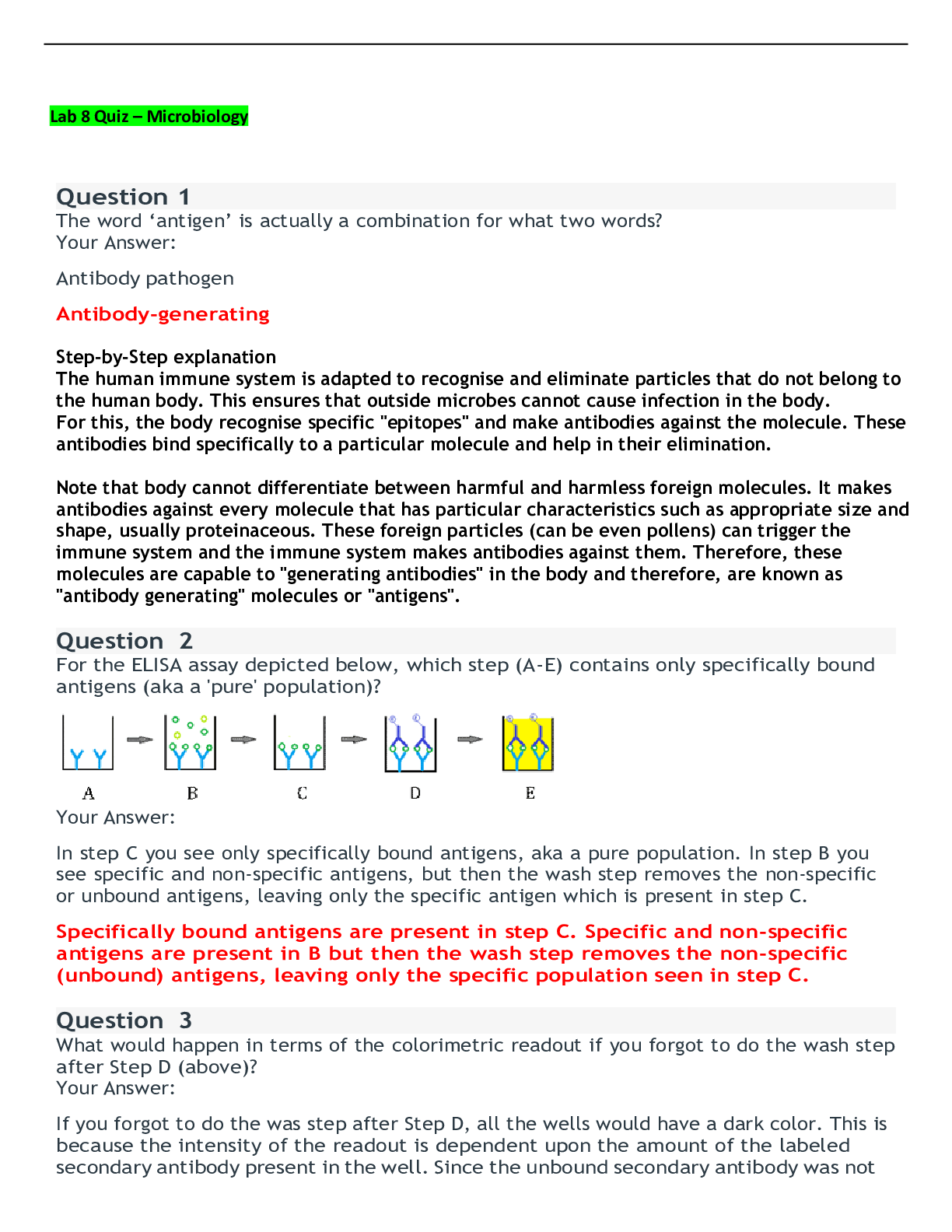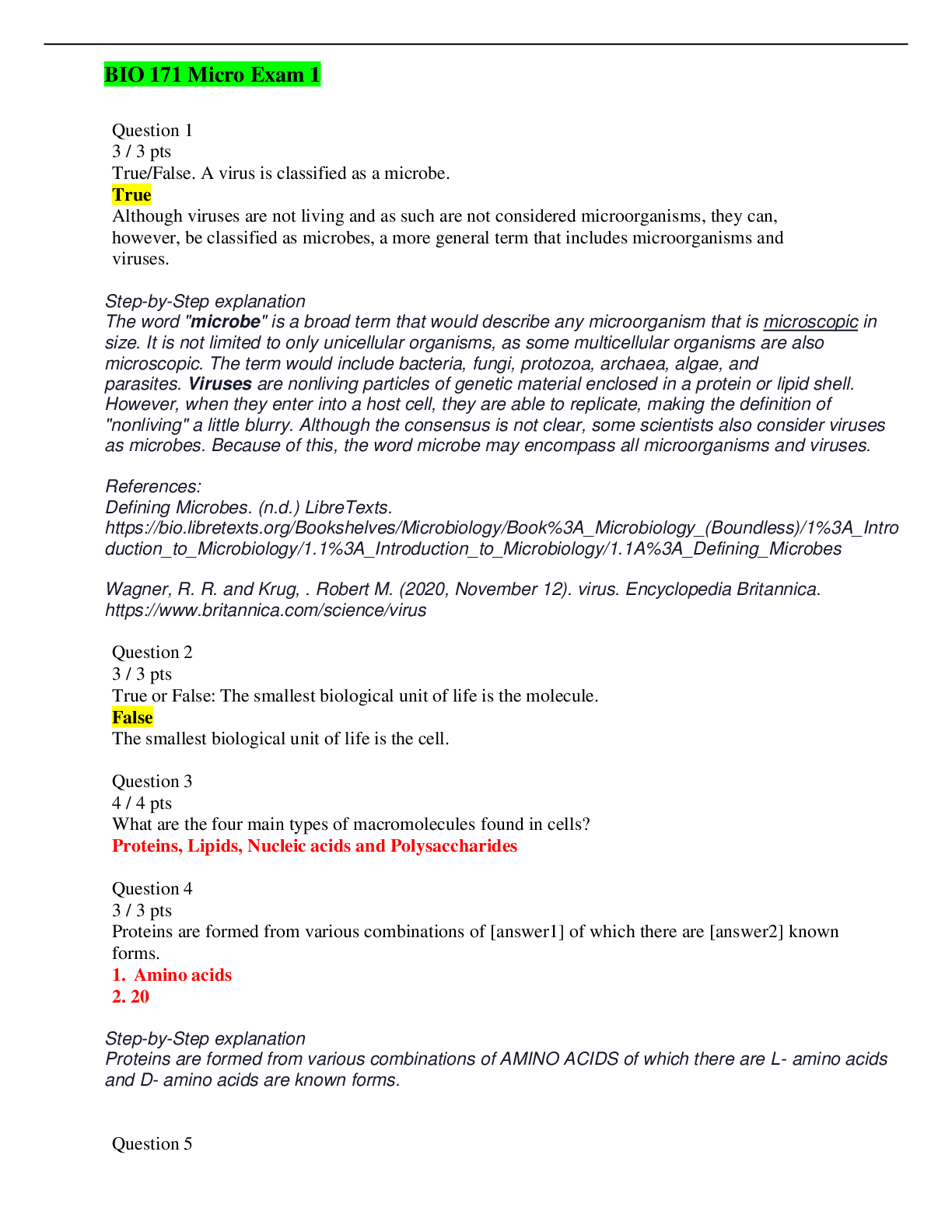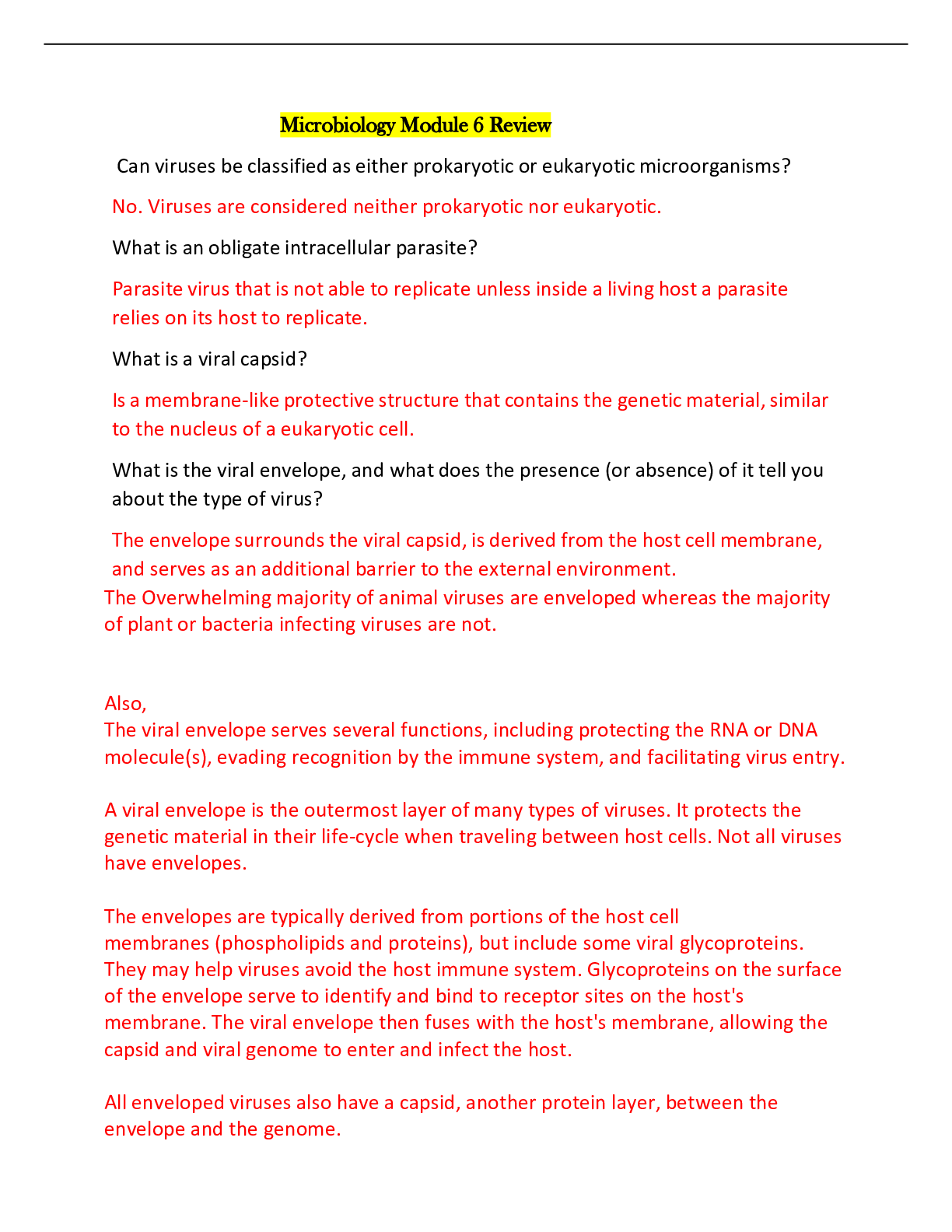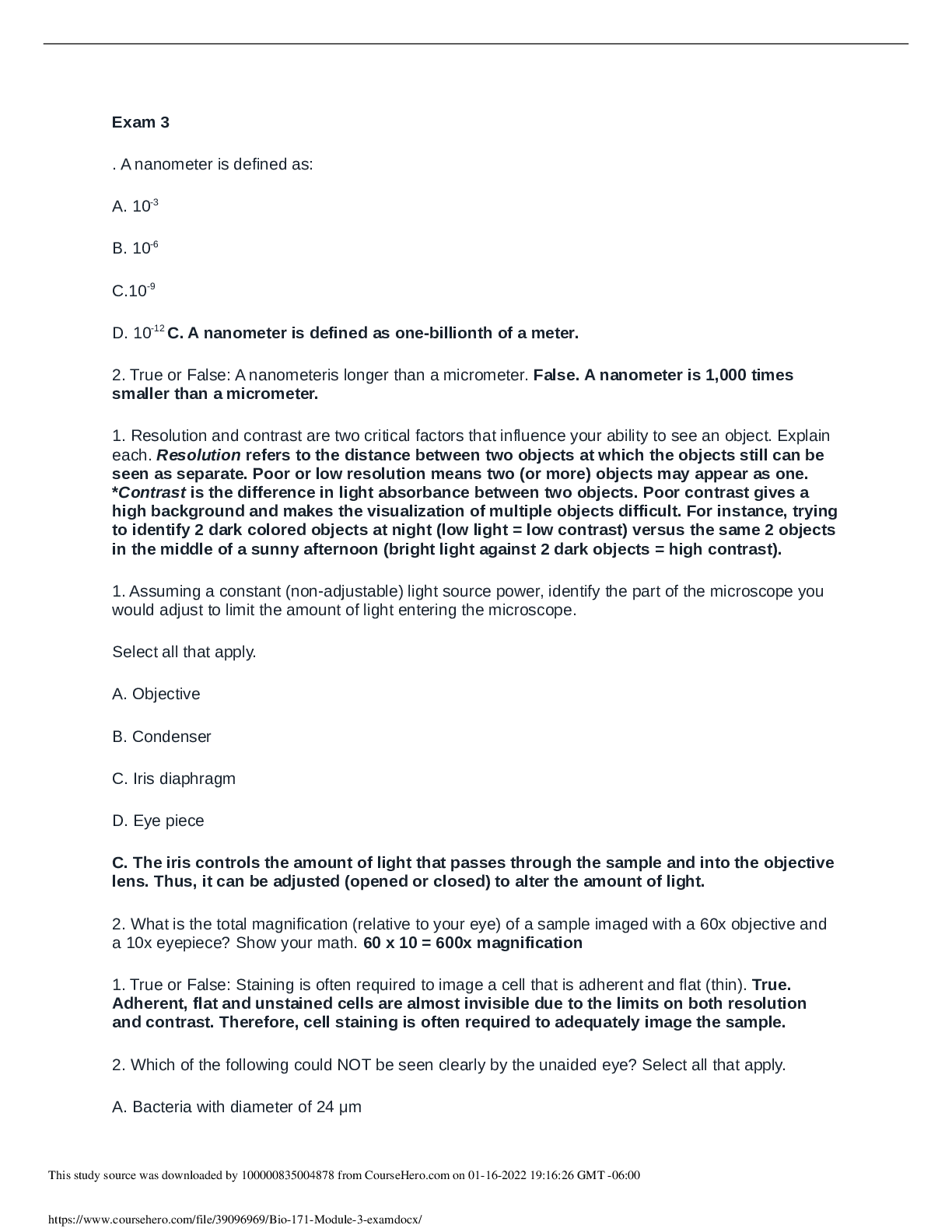Micro Biology > EXAM > MICROBIOLOGY BIO 171 Exam 2 (A GUARANTEED) <100% CORRECT> GRADED A+ | LATEST SOLUTIONS | (All)
MICROBIOLOGY BIO 171 Exam 2 (A GUARANTEED) <100% CORRECT> GRADED A+ | LATEST SOLUTIONS |
Document Content and Description Below
MICROBIOLOGY BIO 171 Exam 2 (A GUARANTEED) <100% CORRECT> GRADED A+ | LATEST SOLUTIONS | 1. True or False: As movement requires energy, metabolism can be defined as a controlled set of biochemical ... reactions that occur in only motile organisms in order to maintain life. False. Metabolism occurs in all living organisms, not just those that move. 2. True or False: Enzymes slow down chemical reactions to conserve energy. False. Enzymecatalyze (speed up) chemical reactions. 3. What is a cofactor? And give a general example. A cofactor is a small chemical componentthat assists an enzyme during the catalysis reactions. A cofactor is usually metal ions. 1. Define catabolism. Catabolism is the process of breaking down larger molecules into usefulenergy sources. 2. Upon cellular injury, which metabolic process is involved during the growth and repair phases of the cell? The anabolic process would be active as it (by definition) is involved in the buildingup of small complexes into larger complexes. 1. Describe the energy transfer process relative to both ATP and ADP. ATP has the energy (phosphate group) to donate while ADP can accept energy in the form of a phosphate group. Thus, ATP can be reduced (ATP →ADP + Pi) while ADP can be built into ATP (ADP + Pi →ATP). 2. An organism that derives its energy (generates ATP) from photons of light is called a ? Phototrophic microorganism. An organism that derives its energy by removing electrons from elemental sulfur would be classifiedas a ? Lithotroph 4. A reactive intermediate would be present in which phosphorylation process? A. Photophosphorylation B. Substrate-level phosphorylation C. Oxidative phosphorylation B. The chemical compound losing the phosphate group is referred to as the phosphorylatedreactive intermediate. 1. Identify the products of the following chemical equation: Glucose + 2NAD+ → 2 NADH + 2 Pyruvate + 2 ATP The products are to the right of thearrow: 2NADH, 2 Pyruvates and 2 ATP [Show More]
Last updated: 1 year ago
Preview 1 out of 5 pages
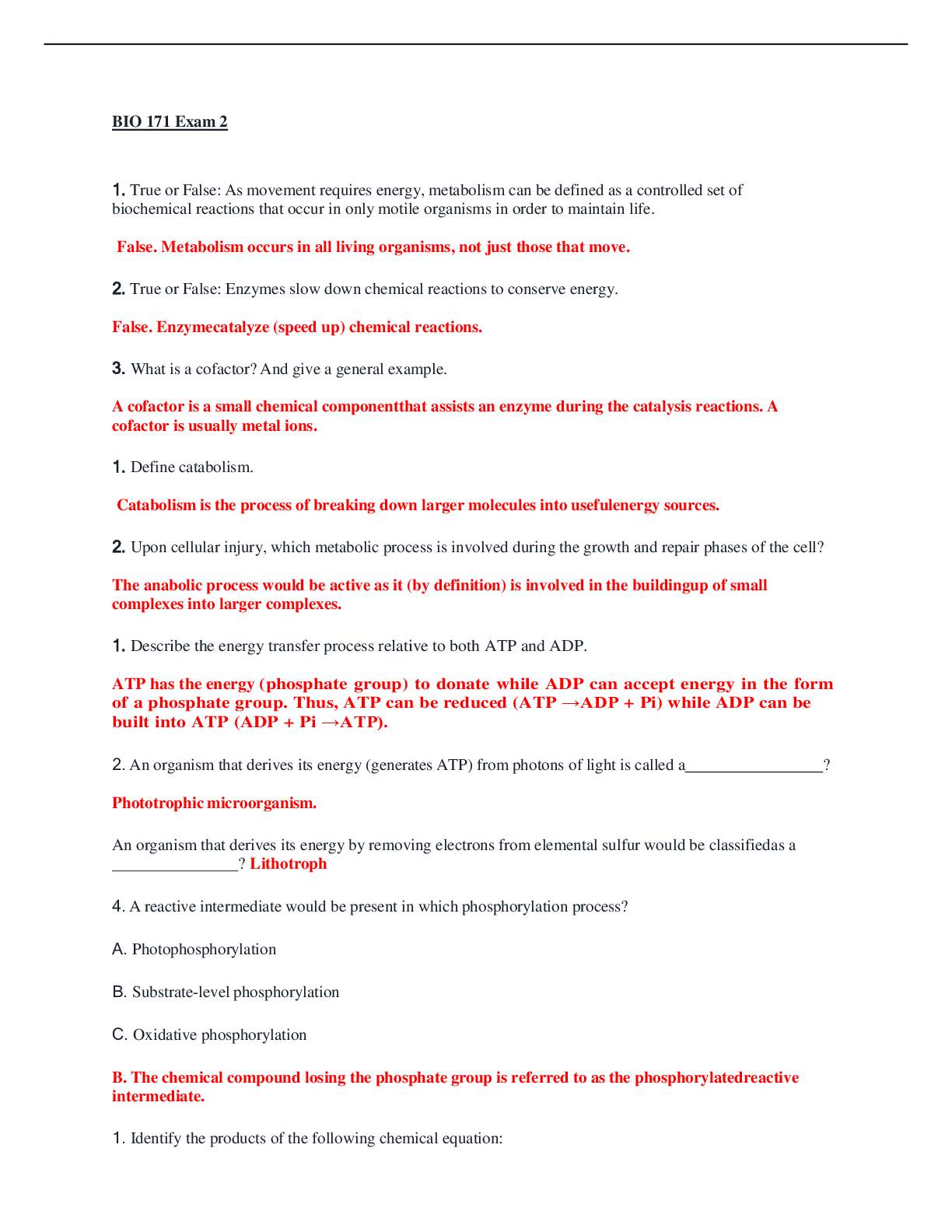
Also available in bundle (1)
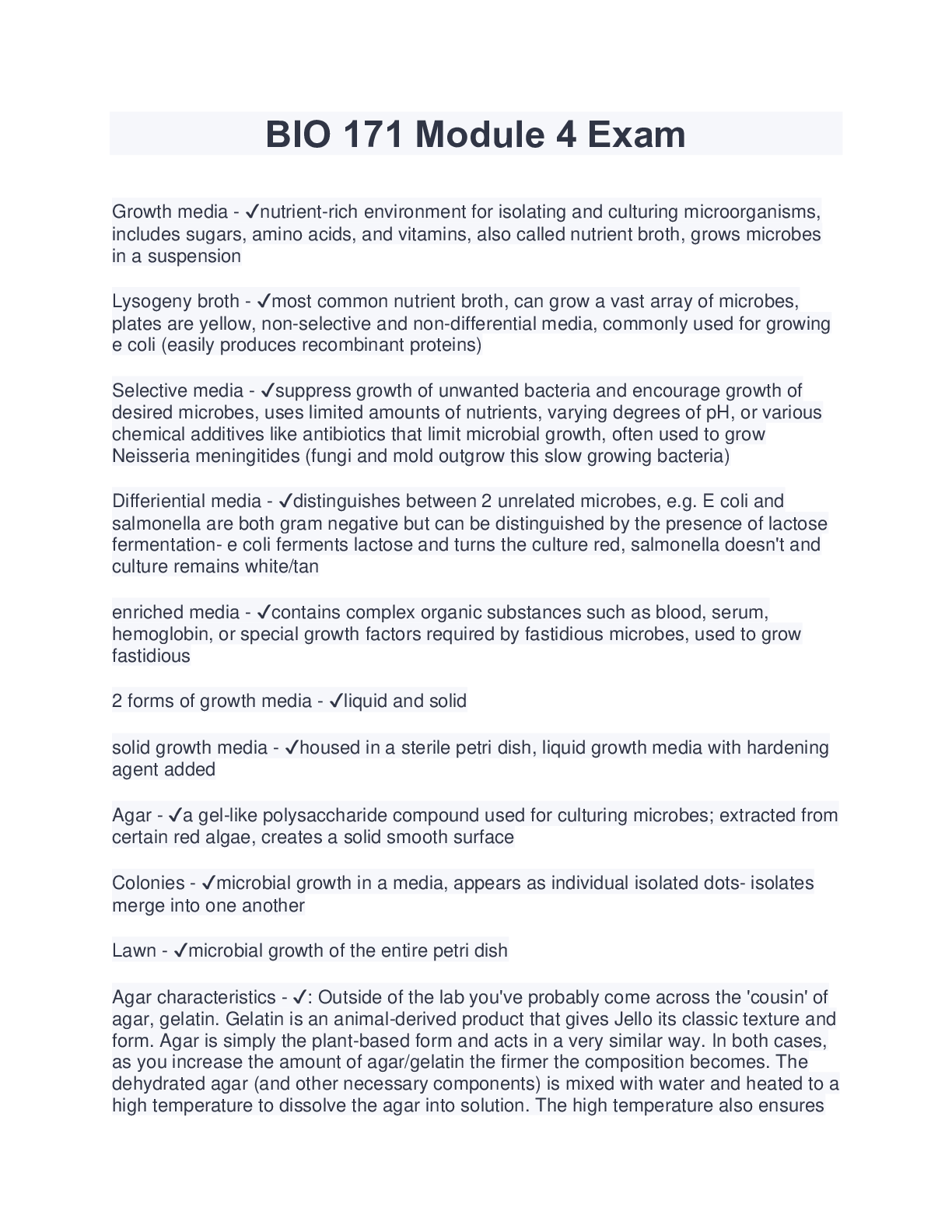
MICROBIOLOGY BIO 171; COMPLETE EXAM MODULES
MICROBIOLOGY BIO 171; COMPLETE EXAM MODULES
By examdomain 2 years ago
$25.5
6
Reviews( 0 )
Document information
Connected school, study & course
About the document
Uploaded On
Feb 08, 2022
Number of pages
5
Written in
Additional information
This document has been written for:
Uploaded
Feb 08, 2022
Downloads
0
Views
70

